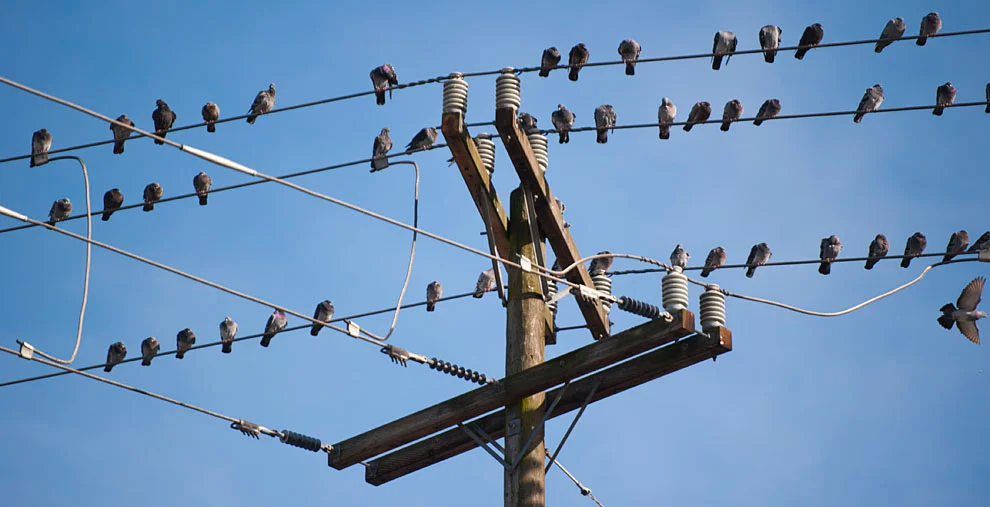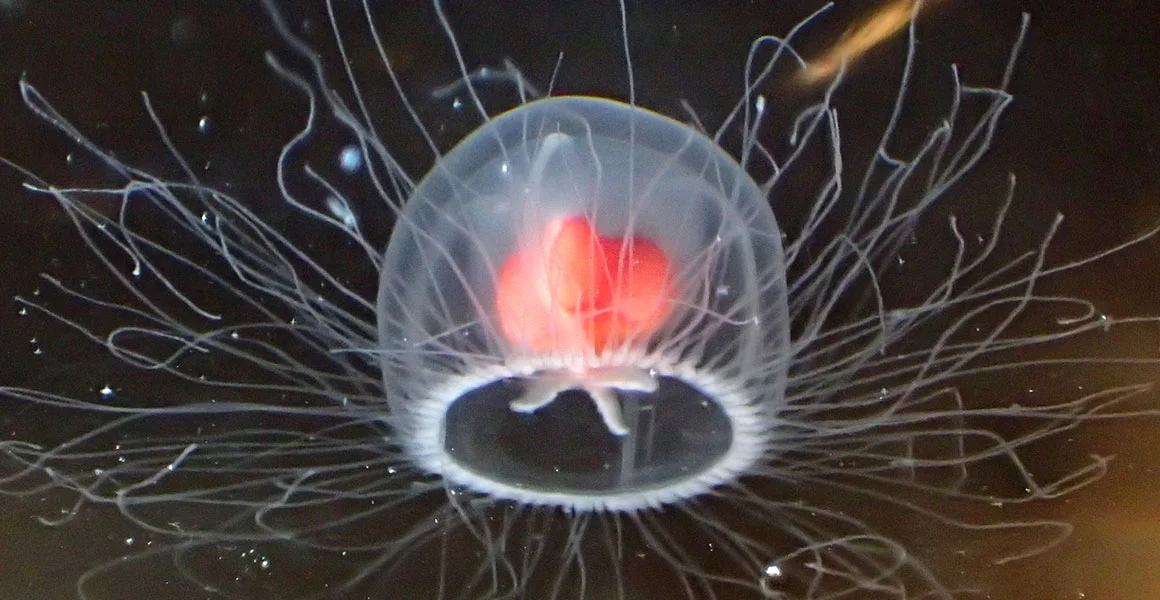Electricity is an invisible force that powers cities, homes, and technology. Despite its immense power, small birds often perch casually on high-voltage power lines without any harm. This observation raises a common question: why don’t birds get electrocuted when sitting on electrical wires?
The answer lies in the basic principles of electrical current, how it flows, and the specific conditions required for electrocution to occur. Understanding this phenomenon requires a look at electric potential, conductive paths, and the bird’s interaction with the electrical circuit.
Electric current and potential difference
Electricity flows in a closed loop called a circuit. This flow of electric charge, known as current, moves from a point of high electric potential (voltage) to a point of low potential. For current to flow through a body — whether animal, human, or object — it must encounter a difference in electrical potential between two contact points.
A single wire, regardless of how high the voltage may be, maintains the same electric potential along its length. When a bird perches on a single wire and its two feet are on the same wire without touching any other object, it is in contact with only one electrical potential. Since there’s no difference in voltage across its body, current has no reason to flow through it.
Conditions required for electrocution
For electrocution to occur, a body must provide a pathway between two points of different electrical potential, allowing current to pass through. That usually means simultaneously touching two separate wires or a wire and a grounded object, like a pole or the earth itself.
There are three critical conditions that lead to electrocution:
- Contact with a high-voltage source
- Simultaneous contact with a lower potential or ground
- A conductive path allowing electricity to flow through the body
Birds perched on one wire do not meet these conditions. They are not grounded and are not touching another wire with a different voltage. Hence, they remain safe.
Difference between birds and larger animals or humans
Unlike birds, humans and larger animals often span a greater distance and may touch more than one wire or structure. If a person were to grab one power line while standing on the ground or reach for another line with a different potential, they would create a complete circuit for current to travel through their body. This could result in serious injury or death.
Similarly, if a large bird with a wider wingspan touched two wires at once, especially if they carried different voltages, it could be electrocuted. While uncommon, such incidents do happen and have prompted some utility companies to implement safety measures for larger bird species.
Why birds don’t complete the circuit
Birds perching on a wire are effectively isolated from the ground and other wires. Their bodies are not long enough to span the distance between two power lines. Even if their wings extend, most species are not physically capable of bridging two high-tension wires at once.
Their feet, made of keratin and skin, also have relatively high electrical resistance. This further reduces any risk, although it’s the absence of a voltage difference — not their resistance — that keeps them unharmed.
When birds can be electrocuted
While most birds perch safely, electrocution is not impossible. There are specific scenarios where birds can be harmed by power lines:
- Bridging two wires: Larger birds like eagles or vultures may touch two lines at once, creating a voltage difference across their bodies.
- Contact with grounded structures: If a bird touches a live wire and a grounded metal structure or pole simultaneously, it may provide a path to ground.
- Wet feathers or conductive materials: Water or contaminants can reduce resistance, increasing the risk of current flow during unfavorable conditions.
These risks are more common in raptors and other birds of prey, which have wide wingspans and are more likely to perch on power poles rather than the lines themselves.
How power companies prevent bird electrocutions
Electrocution of birds, especially endangered species, can pose both environmental and operational concerns. Power companies in many countries have taken steps to minimize this risk.
Here are some common preventive strategies:
- Insulation of wires near perches: Installing protective covers over wires and connectors to prevent contact with multiple elements.
- Bird diverters and markers: Visual deterrents help birds avoid flying into wires and encourage them to perch elsewhere.
- Perch management devices: Special perches are placed away from dangerous spots, guiding birds to safer locations.
- Avian-safe pole designs: Reconfiguring pole structures to increase distance between energized components and grounded parts.
These changes not only help protect wildlife but also reduce power outages and equipment damage caused by bird-related incidents.
Differences between transmission and distribution lines
Bird safety can also vary depending on the type of power line. Transmission lines, which carry electricity over long distances, are typically placed much farther apart and are insulated by large air gaps. Birds rarely bridge such wide gaps.
Distribution lines, however, are more common in urban and rural settings and are spaced closer together. These lines present a greater risk to larger birds, especially when components like transformers or switchgear are exposed.
Understanding the difference helps utility workers prioritize which structures require bird protection upgrades and where fatalities are more likely.
The science of electrical resistance and current flow
Another aspect that helps explain bird safety is the concept of electrical resistance. The current that flows through a body depends on the voltage difference and the body’s resistance, based on Ohm’s law:
Current (I) = Voltage (V) / Resistance (R)
When there’s no voltage difference (as with a bird on a single wire), the numerator becomes zero, and no current flows. Even in low-voltage scenarios, if the resistance is very high — such as through dry skin or bird feet — the current remains minimal and often harmless.
Birds’ dry, scaly feet do not provide a good conducting path. Combined with the absence of a voltage gradient, this makes electrocution extremely unlikely during perching.
Key takeaways
Birds manage to perch safely on power lines because they do not complete an electrical circuit. The absence of a voltage difference between their contact points prevents any current from flowing through their bodies.
Their small size, limited reach, and insulating feet contribute to their safety. However, larger birds or those interacting with grounded structures can face risks under certain conditions. Preventive measures by power companies continue to improve outcomes for avian wildlife.
Electricity remains dangerous and complex, but its behavior follows precise laws. Observing a bird perched peacefully above a city’s power grid offers a fascinating reminder of how physics governs both the natural and manmade worlds.



